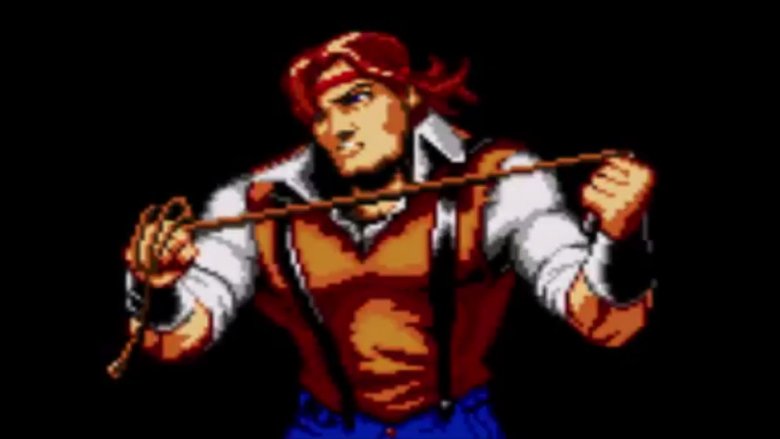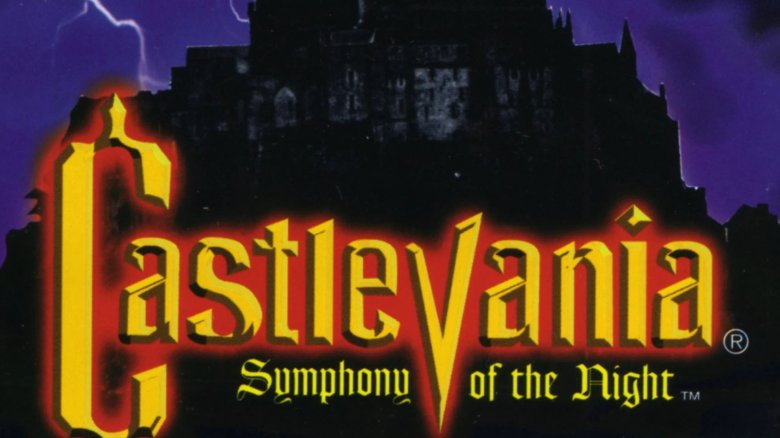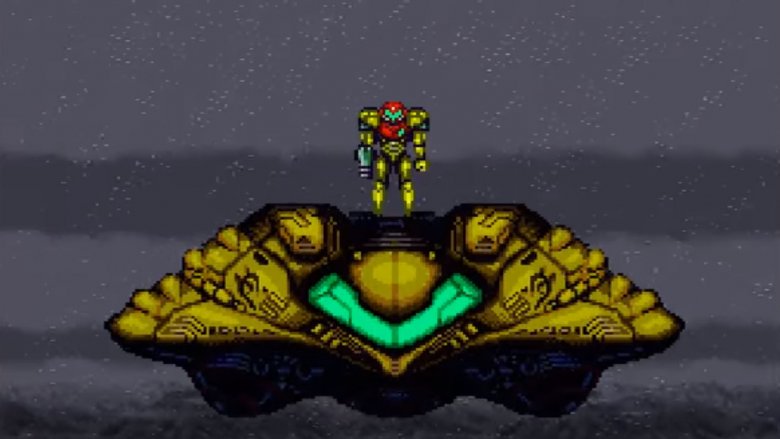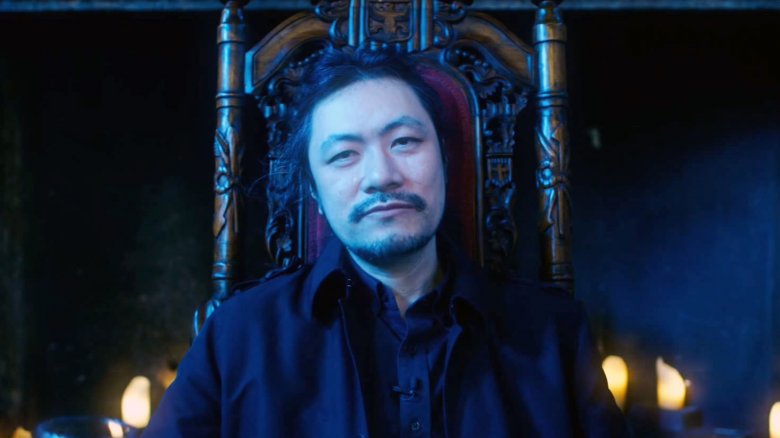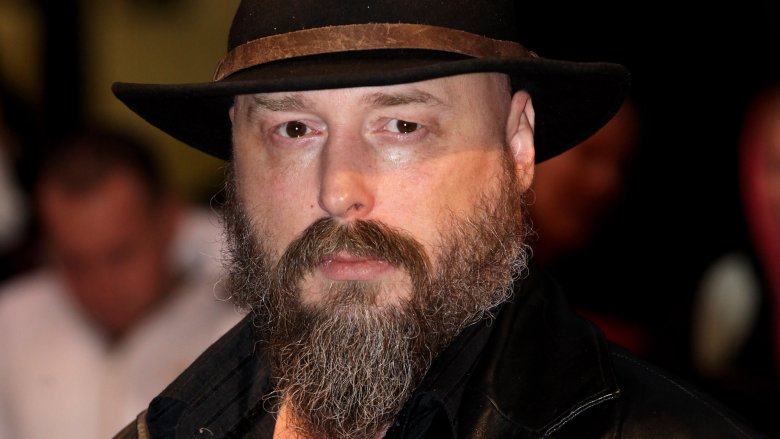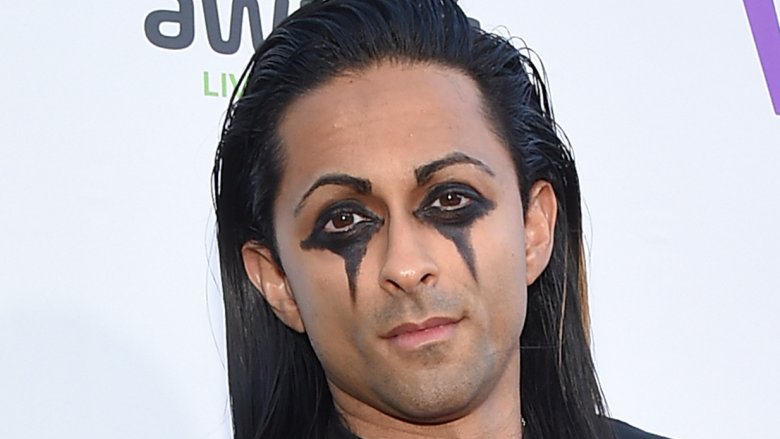The Truth About Castlevania
In 1986, Castlevania took players to Dracula's sprawling, labyrinthian abode. They never looked back. Now, over three decades later, Castlevania isn't just a major video game series, it's also an animated television show, a series of comic books, and the progenitor of an entire video game genre.
And just like Vlad's castle, Castlevania is full of secrets. From its mysterious creator to its mostly-forgotten role on an old Saturday morning cartoon to its roots in B-level horror, there's much more to Castlevania than whips, chains, and vampires. Just don't ask why ol' Drac hides meat in his walls—even Castlevania's most influential creator doesn't have an answer to that one.
Nobody knows who created Castlevania
In the gaming world, Castlevania is a big, big deal. Since the very first title debuted, over 30 Castlevania games—not counting spinoffs, like Kid Dracula—have made their way to store shelves. Castlevania: Symphony of the Night, the series' first PlayStation outing, routinely sits near the top on lists of the greatest games of all time; some critics argue the series sits alongside Zelda, Super Mario, Metal Gear, and Final Fantasy as one of the most important franchises in gaming history.
And yet, historians have no clue who actually created the thing. Koji Igarashi, Castlevania's longtime producer and the name most commonly associated with the franchise, didn't start working on the series until 1997's Symphony of the Night, nearly 10 years after Castlevania first appeared. In the '80s and early '90s, Japanese game developers used pseudonyms at the behest of their corporate overlords in order to make it harder for rival companies to poach talented staff members. Additionally, Castlevania doesn't have a "real" credit sequence. Instead of listing real names or developer nicknames, it ends with a tribute to people like "Christopher Bee" (which sounds kind of like Christopher Lee, who played Dracula a record-setting 10 times) and "Boris Karloffice."
Some historians have tried to track down Castlevania's creator, but haven't gotten much further than a name. Sources at Konami say that a man called Hitoshi Akamatsu is responsible for coming up with the company's long-lived franchise, but other than a handful of credits on other Konami games, nobody seems to know much about him. From the looks of things, Mr. Akamatsu exited the game industry in the '90s and disappeared—if he ever existed at all.
It was a cross-platform franchise from the very beginning
The first three numbered Castlevania games launched on the Nintendo Entertainment System, leading to the impression that it started as a Nintendo-exclusive franchise. It didn't. Only a month after the first game debuted, the second entry in the series, Vampire Killer, arrived on Microsoft's MSX computer. The Game Boy title Castlevania: The Adventure bridged the gap between Castlevania II: Simon's Quest and Castlevania III: Dracula's Curse.
And then there's Haunted Castle, Castlevania's first arcade outing. If you've never heard of Haunted Castle, there's a good reason: according to reports, it's not very good. As in Castlevania, Haunted Castle players guide vampire hunter Simon Belmont through Dracula's castle, using his whip to take out monsters while navigating various platforming challenges. Many of the enemies are the same between the two games, but that's where the similarities stop. The controls are atrocious, and the game is fiendishly hard. Even worse, Simon Belmont only has one life—and, unlike most arcade games, which are happy to gobble up players' quarters, you can only continue three times.
In 2008, Konami brought Castlevania to arcades again, with a little more success. While Castlevania: The Arcade trades the series' exploration-based platforming for House of the Dead-style light gun battles, players do get to wield a real-life LED-enabled whip. By all accounts, it is very, very cool.
Bram Stoker's Dracula is Castlevania canon—kind of
Without Bram Stoker's gothic horror novel Dracula, there wouldn't be any Castlevania. While there had been vampire myths before Dracula, Stoker's book laid the foundation that's been the basis for almost every piece of vampire fiction that followed. Dracula is the Castlevania series' main villain, and its story—which tells the ongoing saga of the Belmont family as they battle Dracula and his evil forces every hundred of years—owes quite a bit to Stoker's magnum opus.
In turn, Konami made Dracula (the book, not the character) part of the Castlevania timeline in Castlevania: Bloodlines. According to Bloodlines, one of the characters from Stoker's novel—Quincey Morris, who helps Jonathan Harker kill Dracula before succumbing to his vampire-induced wounds—is actually a member of the Belmont line. In the game, Quincy (note that his name is spelled a little differently) dispatched Dracula and went on to father Bloodlines' hero John Morris. Castlevania: Portrait of Ruin's Jonathan is Quincy's grandson.
Bloodlines doesn't mention anything about Jonathan Harker or Dracula's main hero, professor Abraham Van Helsing. Its story also doesn't quite jibe with Stoker's—according to Bloodlines, John saw Quincy murder Dracula when he was a kid (in the book, Quincey is a bachelor), and Quincy did the deed solo, without Harker's help. As a storytelling device, linking Stoker and Castlevania raises more questions than it answers. As a tribute to Castlevania's primary inspiration, however? It works just fine.
Alucard isn't a Castlevania original
One of the most popular characters in Castlevania canon is Alucard, Dracula's half-son and the hero of Castlevania: Symphony of the Night. Alucard's name might be silly, but he's a noble and fierce warrior who's put his dad back in the ground and saved humanity multiple times.
While everything about his backstory reeks of late-'80s and mid-'90s video games, Alucard, like his old man, is actually lifted from older source material. In 1931, Universal Studios released Dracula, which—thanks largely to Bela Lugosi's performance—instantly catapulted the character's popularity to new heights. Universal followed up on the blockbuster hit with two sequels: Dracula's Daughter, which came out in 1936, and Son of Dracula, which debuted in 1943.
In Son of Dracula, horror star Lon Chaney Jr. played the mysterious Count Alucard, who seduces a young heiress with promises of immortality and ultimately meets his demise at the hands of the woman's scorned boyfriend. One of the characters, who happens to be reading Dracula, realizes that Alucard is simply Dracula spelled backwards and immediately realizes that they're up against a vampire, giving the good guys a leg up in the ensuing battle.
It's been adapted into animation twice
Netflix's Castlevania is actually the second animated adaptation of the classic game series. In 1989, DIC Entertainment produced a Saturday morning cartoon called Captain N: The Game Master, and characters from Castlevania played a major role.
Captain N told the story of a teenager named Kevin Keene who got sucked into his Nintendo Entertainment System and faced off against villains from various 8-bit video games. Along the way, Kevin received help from Mega Man, Kid Icarus, a sentient Game Boy, and Castlevania's first leading man, Simon Belmont. In Captain N, Simon is a vain adventurer who cares more about his dashing good looks and bulging muscles than fighting evil. While he's ostensibly a hero, Simon spends most of his time trying to one-up Kevin, who he sees as a rival for Princess Lana's affections.
Simon isn't the only Castlevania character who showed up on Captain N. Dracula, going as the Count, served as a recurring villain. Alucard, who debuted in the NES' Castlevania 3, shows up too—although maybe he shouldn't have. In the third season episode "Return to Castlevania," Alucard makes his animated debut as a wisecracking teenager with sunglasses, a bat-shaped skateboard, and an unhealthy obsession with rock and roll. It was pretty much the most cringeworthy early-'90s thing ever, and thankfully, that version of Alucard quickly disappeared and never returned.
Castlevania: Symphony of the Night originally didn't sell very well
Even 20 years after its debut, Castlevania: Symphony of the Night is still regarded as the high point for the Castlevania series, not to mention one of the very best video games ever made. And yet, when it first came out, the game was set to be a massive flop, especially in the United States.
See, like its predecessors, Symphony of the Night is a 2D sidescroller, and that's by design. Not only does Symphony of the Night director Koji Igarashi love 2D games, but he actually thinks that it's the only way to play Castlevania (he cites the 3D Nintendo 64 Castlevania titles, which he didn't work on, as proof). In 1997, that was a problem. At the time, 3D graphics were the game industry's new big thing, thanks largely to blockbuster hits like Super Mario 64 and Final Fantasy VII; as a result, Konami didn't think Symphony would sell, and the company didn't print many copies of the game or put many resources into marketing it. Despite positive reviews, it got off to a slow start in the marketplace.
Of course, over time, positive word of mouth spread, and the game became a cult classic—and then just a classic in its own right. Original Symphony of the Night discs sell for close to $100 on eBay, and the game is considered responsible for inventing an entire genre. Not bad for a piece of software that was supposed to tank.
The father of modern Castlevania would love to make a Metroid game
Symphony of the Night has a lot in common with Nintendo's Metroid series. Both games are side-scrolling adventures that take place in large, open worlds. Both mix combat, platforming, and puzzle-solving, and both require players to thoroughly examine the environment in order to earn new items, weapons, and skills, which can then be used to overcome obstacles and reach previously inaccessible areas.
In fact, the basic loop of both titles is so similar that players have started to call that type of 2D, exploration-heavy game "Metroidvania," paying tribute to the genre's dual influences. Pretty much no developer is better at it than Koji "IGA" Igarashi, either. As co-director of Symphony of the Night and lead Castlevania producer from 2001 through 2010, he's the man behind 16 separate Castlevania games. He knows what makes a Metroidvania game work, and he says he'd be "incredibly honored" to take a stab at the other big Metroidvania franchise.
Not that it'll ever happen, of course. Not only does Igarashi note that "Nintendo is very careful about protecting their IPs and making any changes to their games," but while Igarashi was cranking out 2D Castlevania titles (many of which launched on Nintendo's portable systems), Metroid Prime moved the series from 2D into 3D. "they probably decided from that point on that Metroid was going to be a 3D game series," Igarashi says, "and by that rationale, my style of games didn't really fit their criteria."
Never say never, of course. At E3 2017, Nintendo revealed Samus Returns, a 2D Metroid for the 3DS portable, while Koji Igarashi is a free agent with his own studio—one that's hard at work on Bloodstained, which is, you guessed it, a Symphony of the Night-like side scrolling adventure.
Producer Koji Igarashi has one big regret
You don't make almost 20 games in ten years without making a few mistakes, but there's one decision in particular that Igarashi wishes that he could take back.
While developing Symphony of the Night, Igarashi developed a series timeline for the developers to use as reference. It leaked in a gaming magazine, and the Castlevania team decided to make it official. "That was a bad decision," Igarashi says. According to the timeline, Dracula returns to menace the Belmonts and their allies every 100 years. Unfortunately, the official timeline is so thorough that it hurt Igarashi and Konami's creative process down the line. "Because since Dracula only appears every 100 years," Igarashi explains, "we made the whole timeline and ran out of places to put in another game."
Of course, there's an easy solution to that problem, and it's one that the producers behind the Spider-Man and Fantastic Four films know very well: when continuity gets too crowded, just throw it all out and start over. That's what Konami did in 2010 when it handed developer MercurySteam the reins for Castlevania: Lords of Shadow, a series of 3D action games that have more in common with God of War than Symphony of the Night, and take place in an entirely different universe.
Metal Gear Solid creator Hideo Kojima helped turn Lords of Shadow into a Castlevania game—for the second time
As told by producer Dave Cox, the story goes something like this: in the late '00s, Konami enlisted Cox and the studio MercurySteam to create a brand new, 3D reboot of the Castlevania franchise. Cox and the developers put together a prototype and showed it to Konami's executives. The executives grew nervous about all the changes MercurySteam was making to the classic franchise, and while they wanted Cox and his team to keep working on the game, they stripped away the Castlevania branding.
Development on Light and Shadow—which would eventually become Lords of Shadow—continued, and made its public debut at Gamescom 2009 in Cologne, Germany. Later that year, Cox travelled to Japan to show the latest version of Lords of Shadow to Konami higher-ups, which included Metal Gear Solid overlord Hideo Kojima. Kojima loved it and asked the room, "Why isn't this Castlevania?" According to Cox, it was awkward.
Eventually, Kojima joined Lords of Shadow as a producer, although Cox says that he was largely hands-off, and mainly helped handle the game's Japanese localization. Ironically, a few years later, neither Cox nor Kojima would be working at Konami. Konami and Kojima suffered a messy public breakup while Kojima was developing Metal Gear Solid 5, and Cox left the company after Lords of Shadow 2, saying that Konami's priorities had changed and "it was clear there wasn't a role there for me anymore."
The writer of the Castlevania Netflix series has never played the games
Warren Ellis is geek royalty. As a writer, he's responsible for penning groundbreaking comics like The Authority and Transmetropolitan. He's an accomplished author, with two novels, Crooked Little Vein and Gun Machine, to his name. The Bruce Willis action vehicle Red is based on one of his creations. So is Iron Man 3, and the well-received but ultimately shelved Global Frequency pilot. He's even dabbled in video games—Ellis is one of three credited screenwriters on Dead Space, Electronic Arts' moody sci-fi survival game.
But while Castlevania is one of the all-time classic video game franchises, Ellis tells Wired, "The awful truth is that I've never played or even seen the game. Terrible, isn't it?" Instead, when Ellis first got the Castlevania gig, he turned to Google for a quick cram sessions, saying, "What immediately struck me was how it initially appeared, to me, at least, to be a Japanese transposition of the Hammer Horror films I grew up with and loved. I'm sure that's a completely wrong-headed perception, by the way."
Konami employees, especially Koji Igarashi, helped Ellis keep things authentic. In 2007, when pre-production on the series began (originally, it was going to be an 80-minute movie), Igarashi made Ellis re-write the premise five times and forced him to do three passes on the outline in order to make sure he got Castlevania right. That's a lot of work—Ellis says he remains "absolutely passionate about beating the crap out of IGA in a dark alleyway"—but it paid off. Netflix's Castlevania is one of the most faithful video game adaptations ever made, while still preserving Ellis' unique and twisted voice.
Castlevania's producer turned down the opportunity to make a live-action adaptation
Adi Shankar isn't just the producer behind gritty Hollywood fare like Dredd and The Grey. He's also a bona fide geek who cares passionately about comics, video games, and TV shows. In a series of unlicensed short films called the "Bootleg Universe," Shankar has put a unique (and decidedly morose) spin on classic series like Power Rangers, the Punisher, and 007. These are more than just grim and gritty fan films, too—each one serves as both a detailed deconstruction of an iconic franchise and a love letter to the series itself. As Shankar puts it, "I felt like the major studios were blatantly disrespecting fandom." He decided to take matters into his own hands.
Shankar's dark storytelling and fiery passion make him an excellent person to shepherd Castlevania from consoles to the big or small screens, and others clearly agree. In 2014, shortly after Dredd premiered, studio executives offered Shankar the opportunity to direct a live-action Castlevania film. As Shankar describes it, it would've been a mid-size feature, "in the same vein as Underworld, from a budget perspective."
Shankar loves Castlevania, but ultimately decided that the proposed film wasn't faithful to the video game and "felt 250 percent wrong," so he ended up walking away. It wasn't easy, of course. "This is one of my favorite games," he recalled, "and I'm literally staring at the chance to adapt it, but have to say no." That's probably for the best. One chance encounter later, and the animated series was in motion, giving Shankar the opportunity to adapt Castlevania again—and this time, he could do things the right way.
Castlevania is the first video game adaptation to get a 'Fresh' rating on Rotten Tomatoes
Leave it to the Belmonts to break one of the entertainment industry's longest-standing curses. For the first time ever, a game-to-film adaptation has a "fresh" score on Rotten Tomatoes, meaning that it received at least 60% positive reviews from critics. In fact, Castlevania didn't just break the glass ceiling, it shattered it. At the time of writing, Castlevania has a Tomatometer score of 90 percent.
In comparison, 2016's Warcraft scored 28 percent. Assassin's Creed has 18 percent. The Resident Evil films range from 35 percent (2017's climactic send-off Resident Evil: The Final Chapter) to 21 percent (Resident Evil: Apocalypse). Mortal Kombat, which was the considered the "good" video game adaptation back in the '90s, only scored 34 percent. Super Mario Bros. only managed to rack up 15 percent.
There is one big caveat, of course: Castlevania lacks the 20 reviews a TV show needs to qualify for Rotten Tomatoes' "Certified Fresh" rating. It doesn't matter. According to the site, both critics and fans alike are going crazy for it—in fact, the biggest complaint seems to be that at four episodes, it's just too short. Hey, Netflix: season two ASAP, please.

